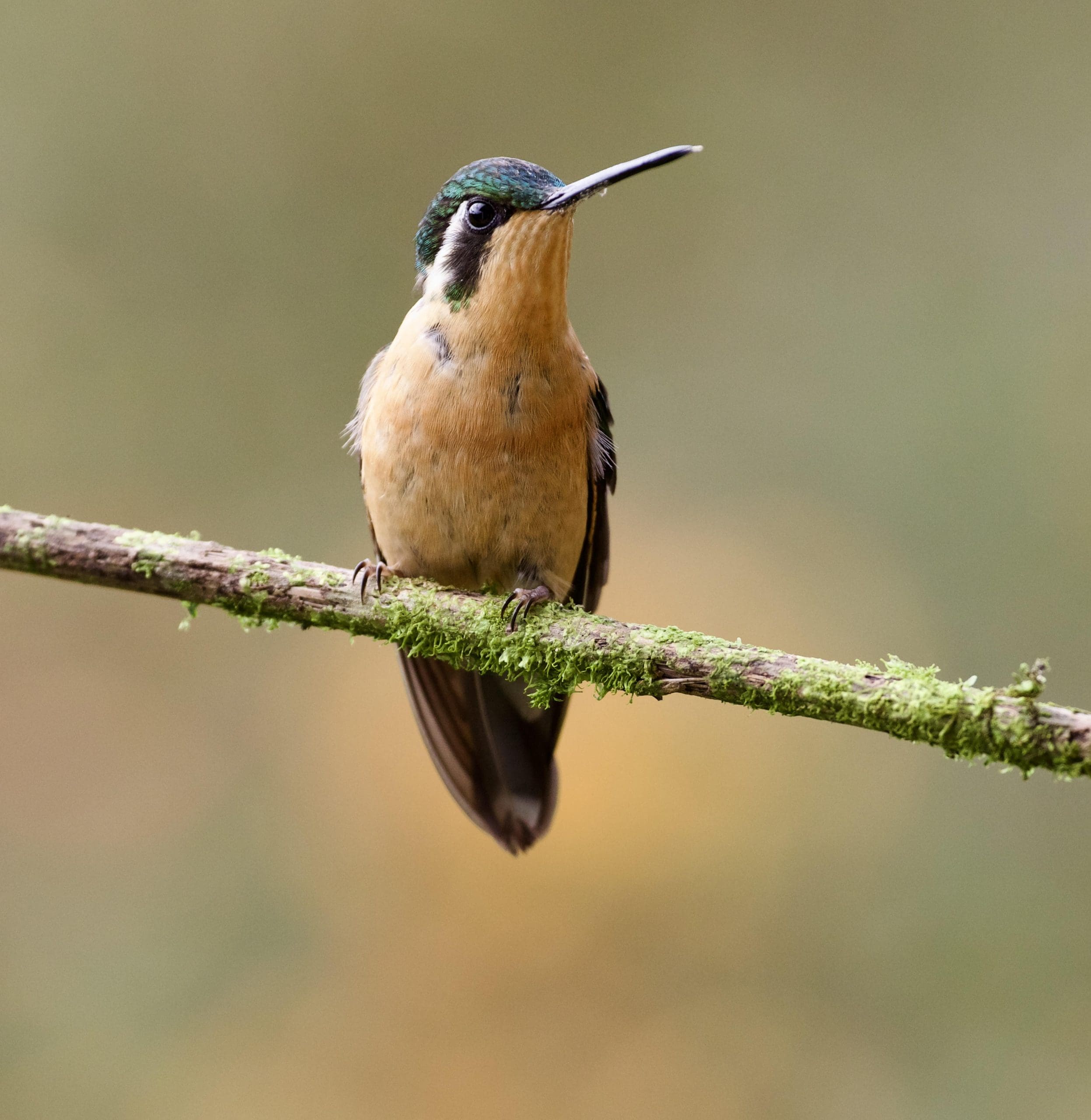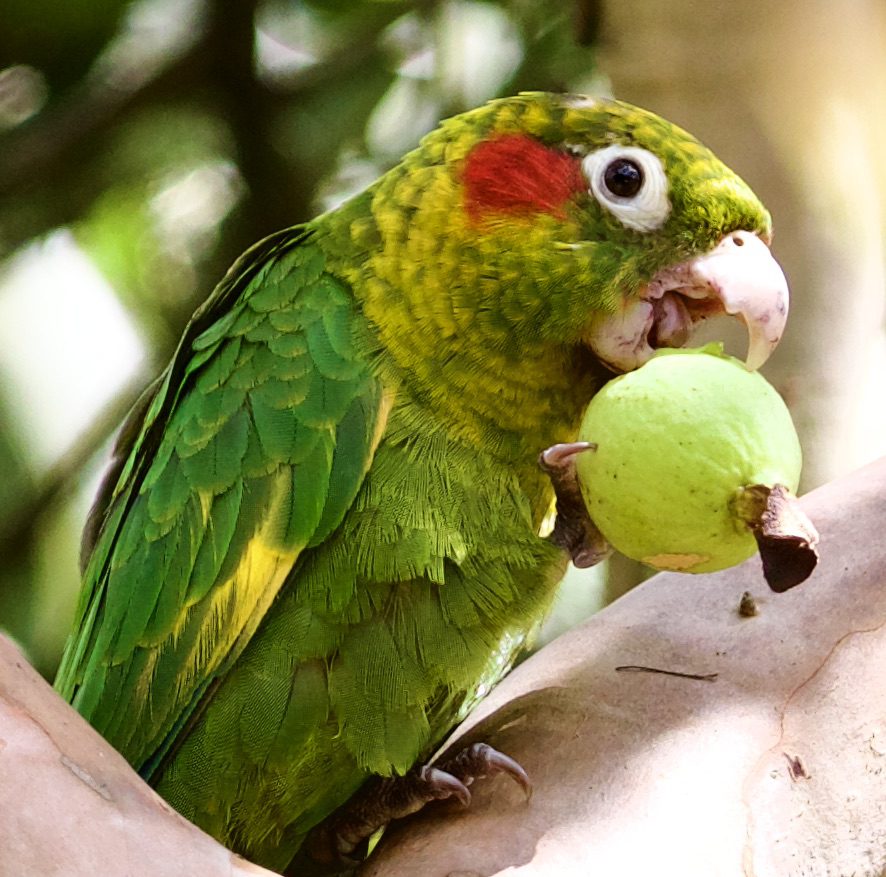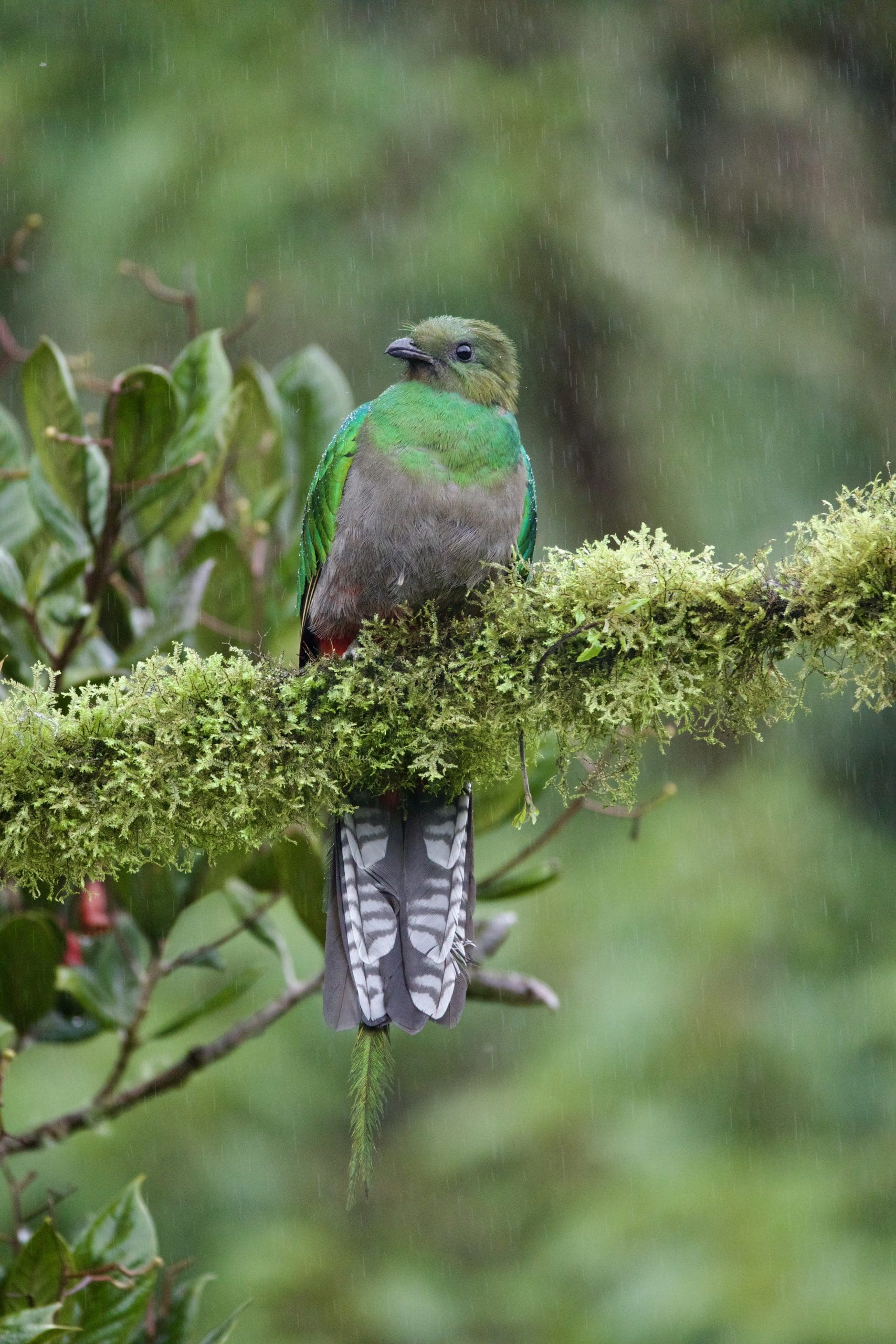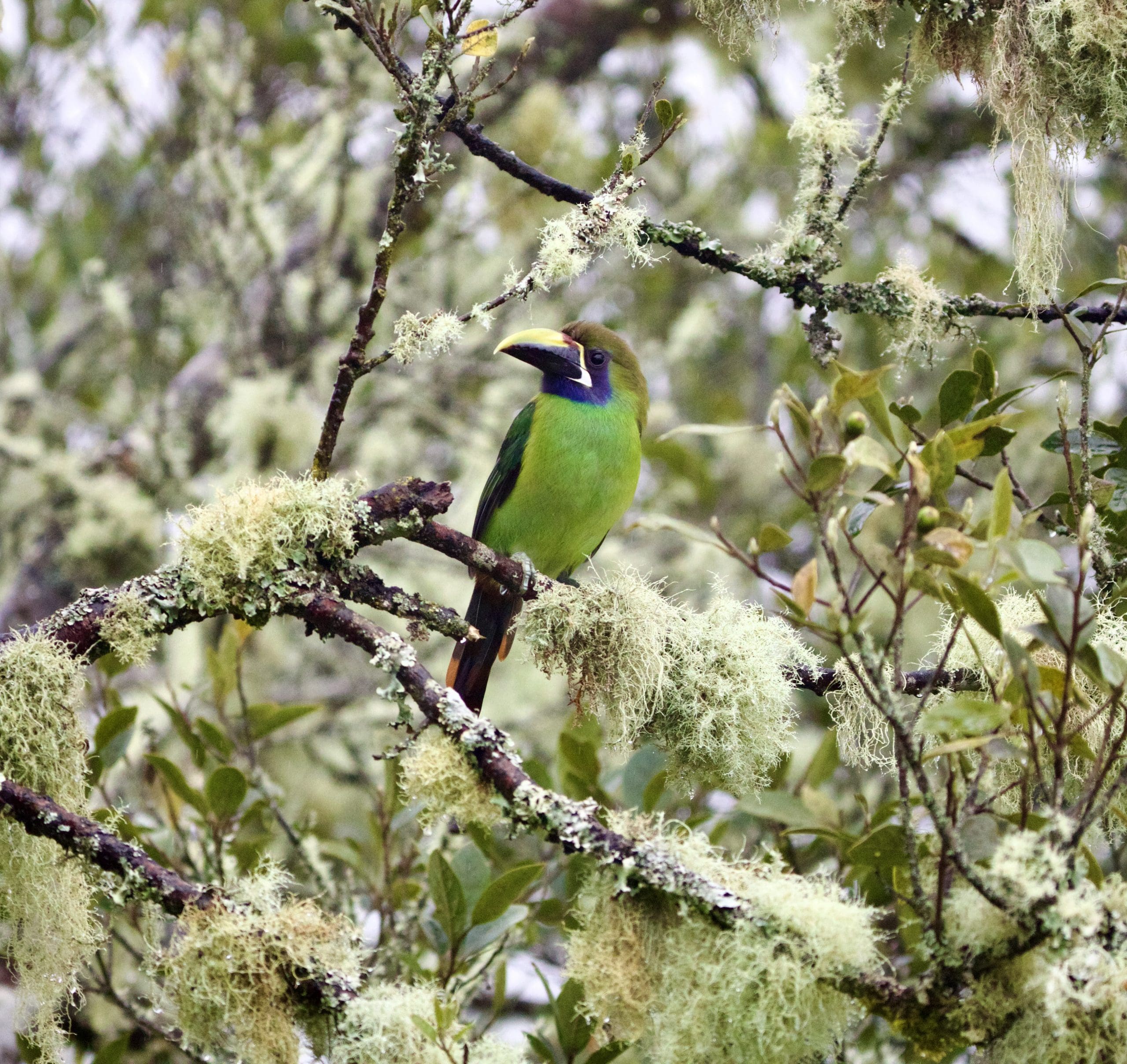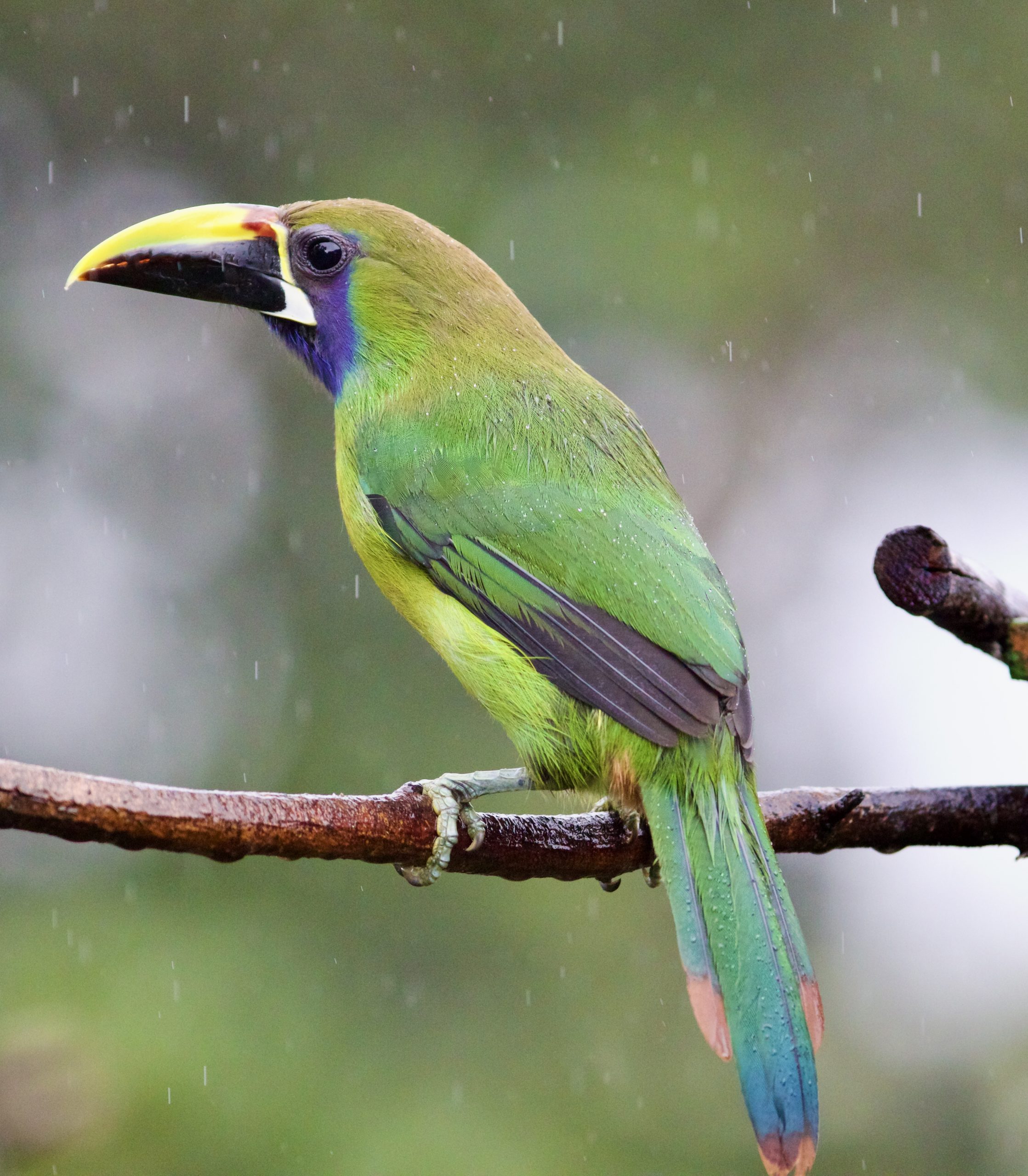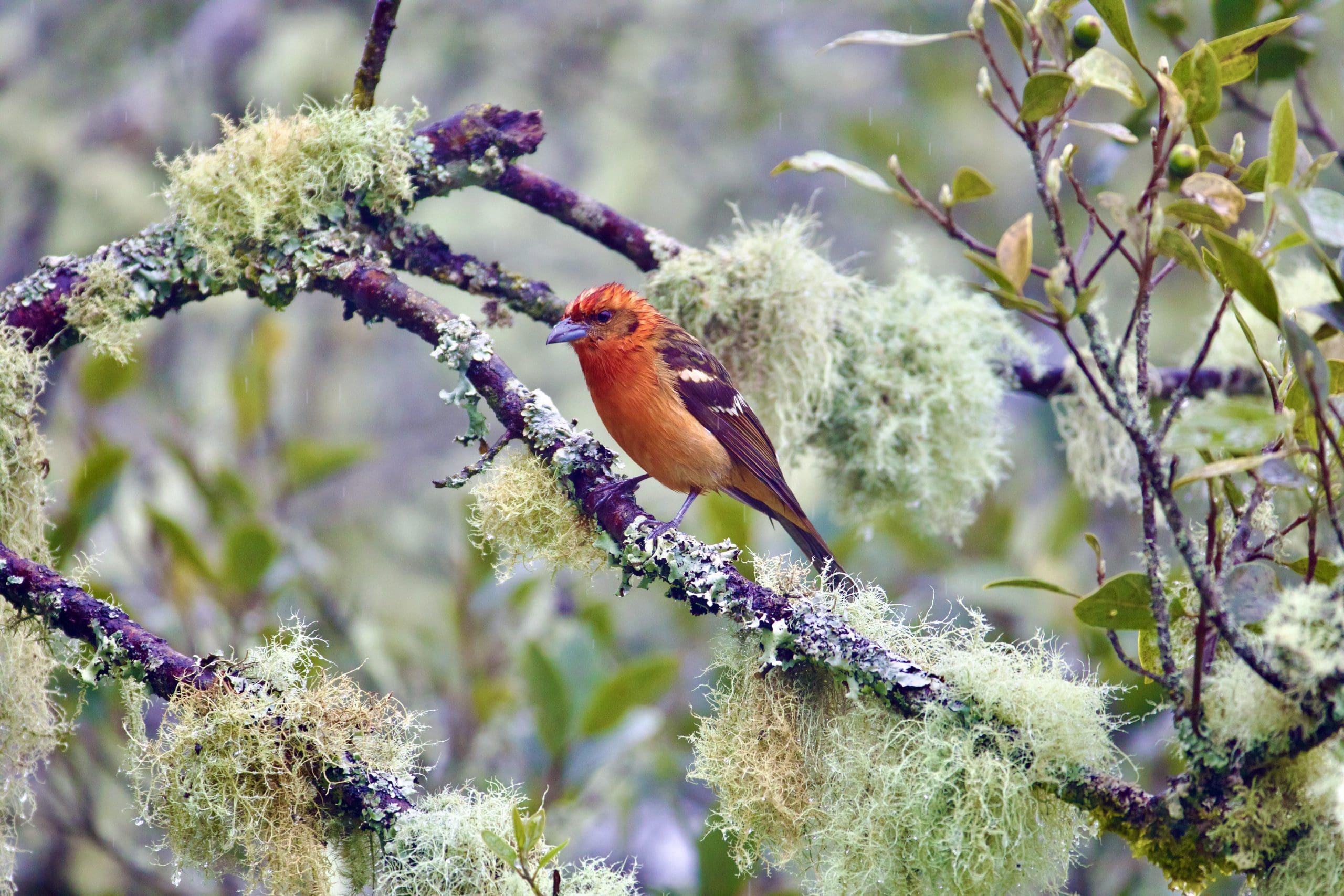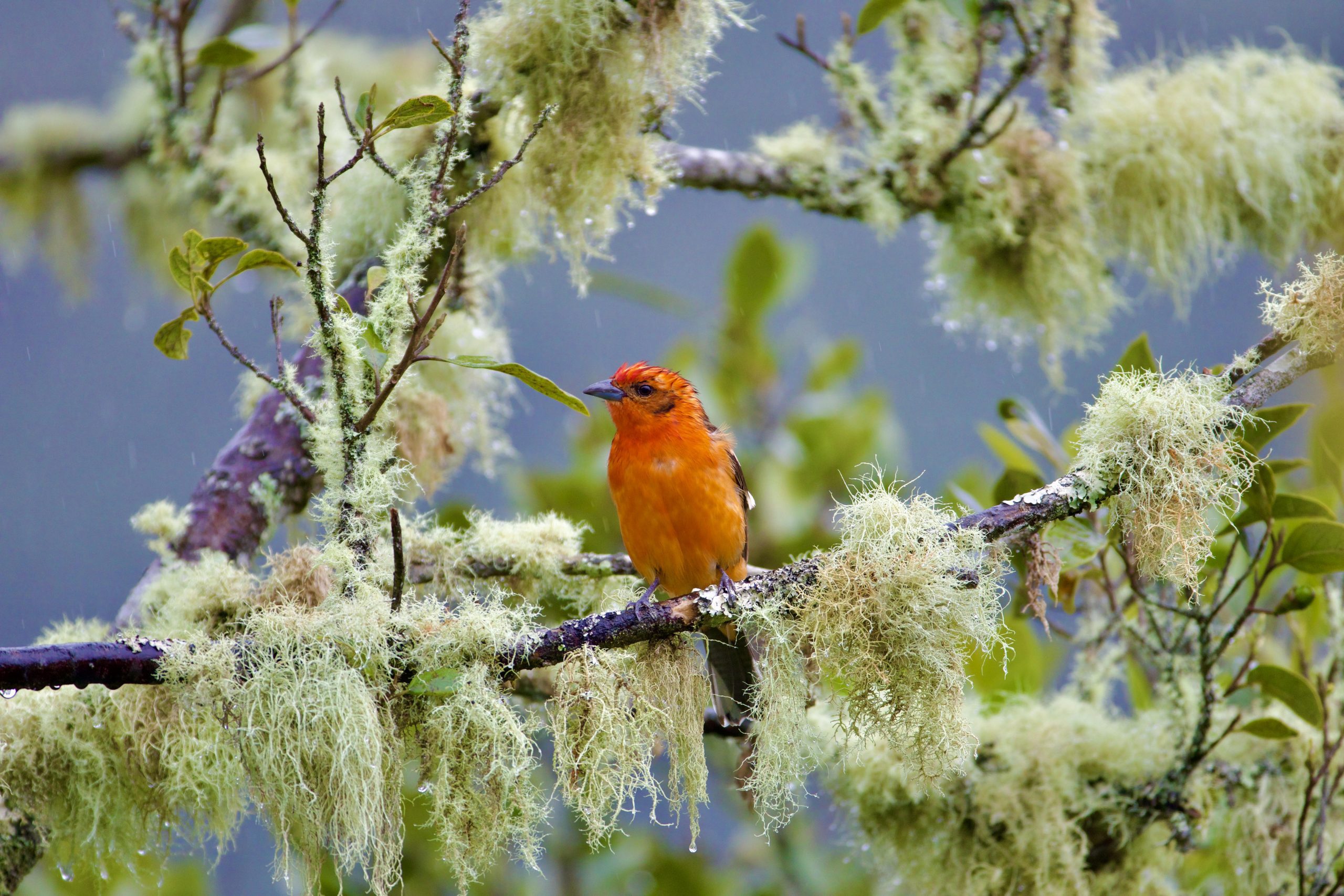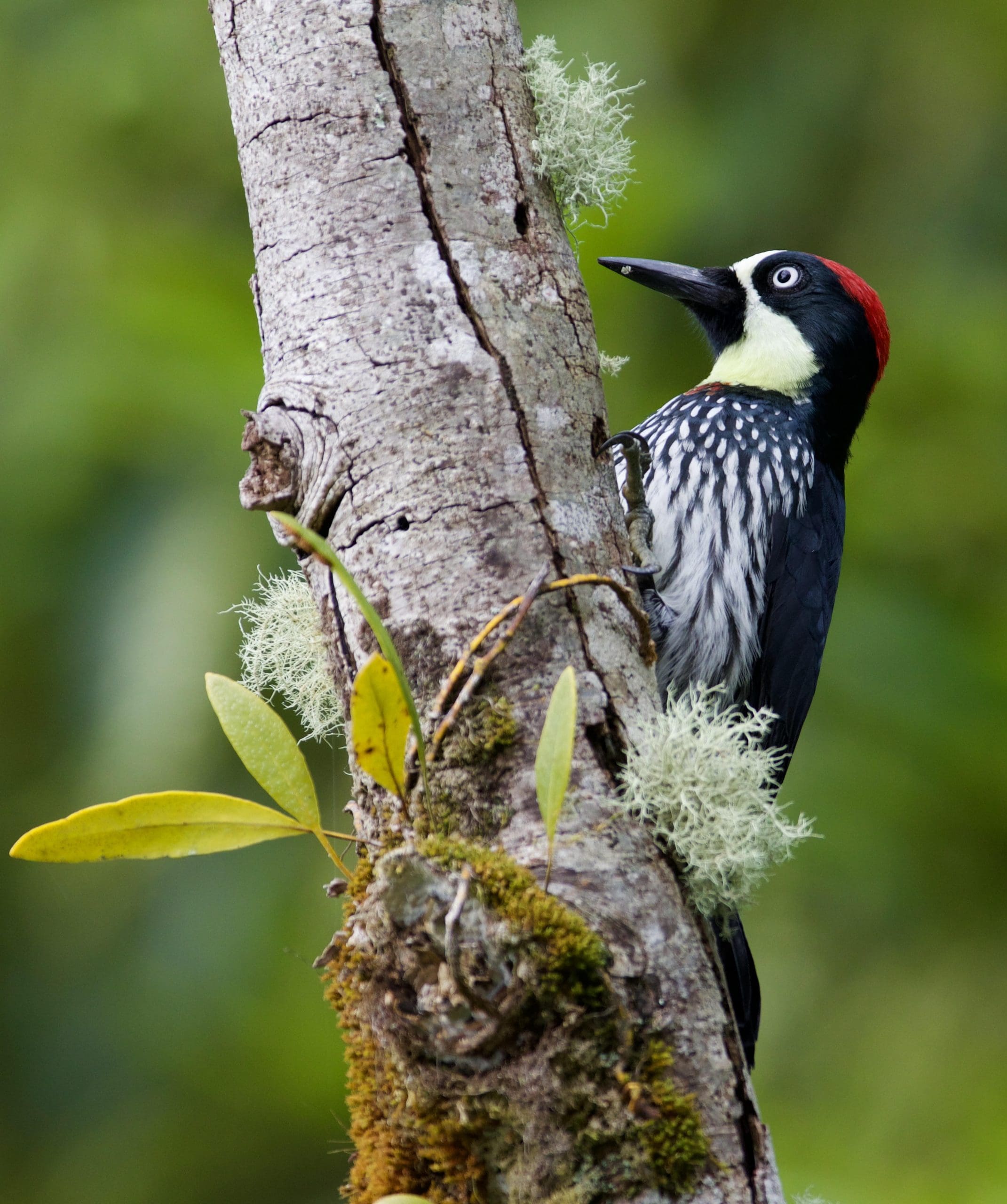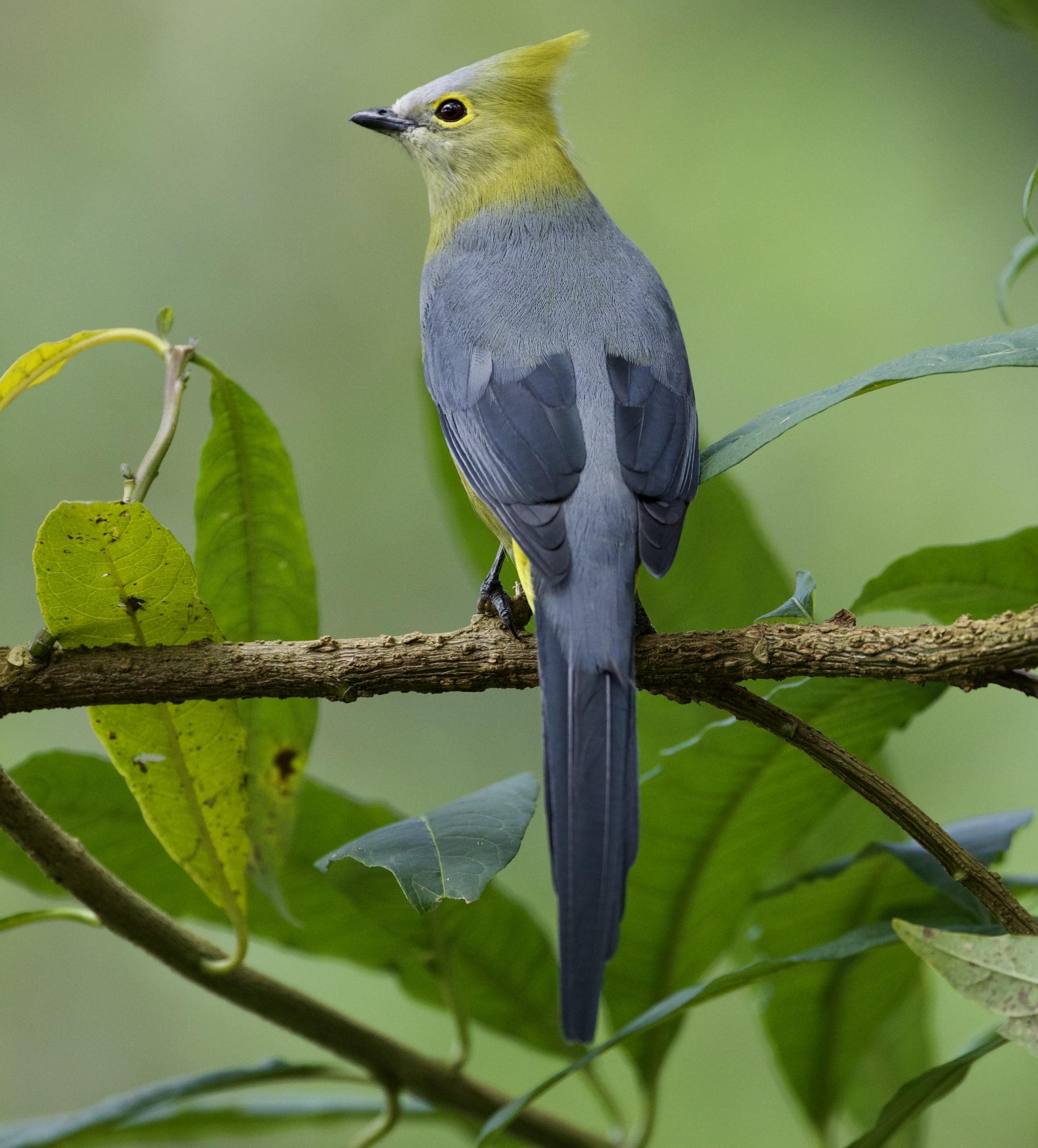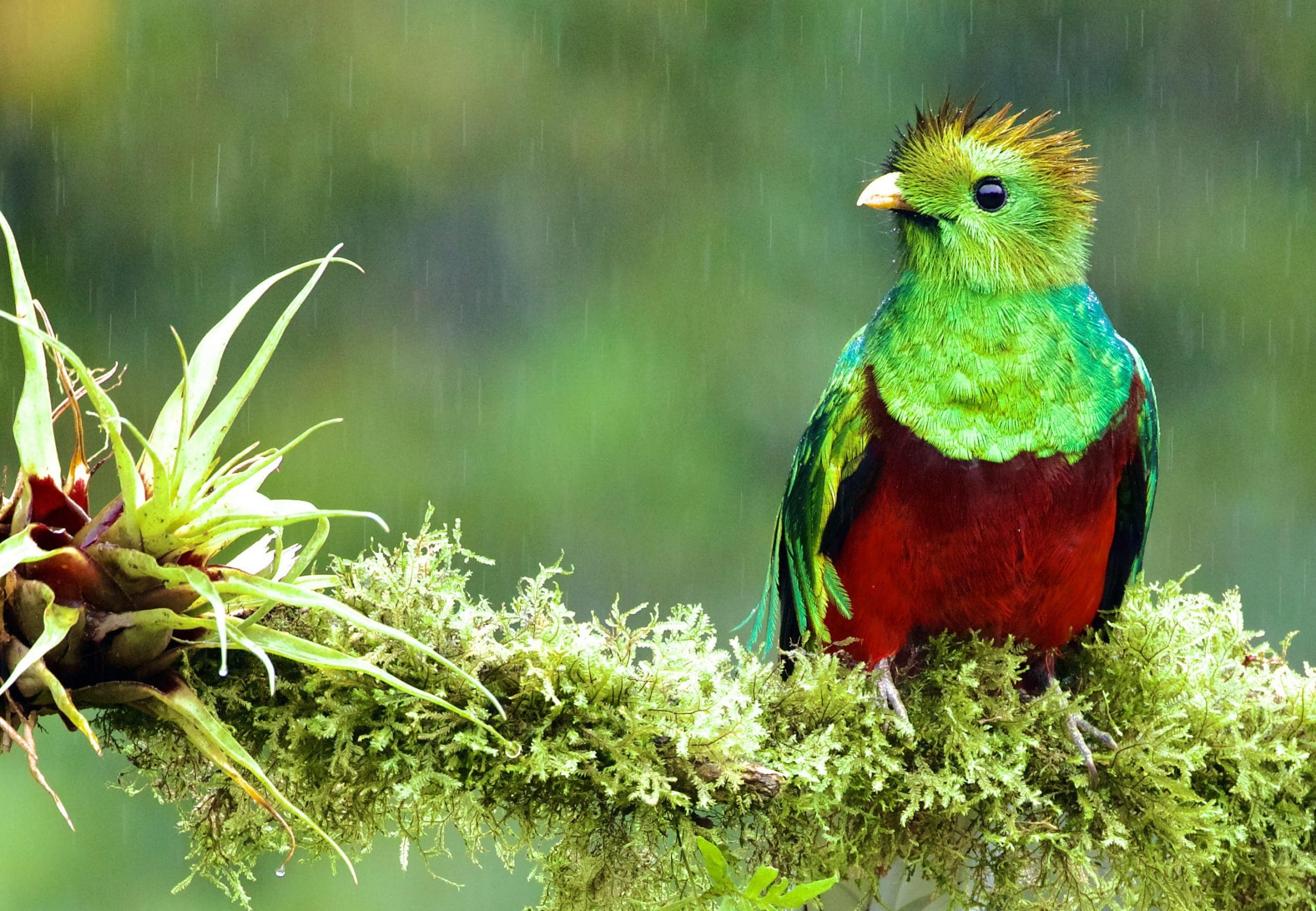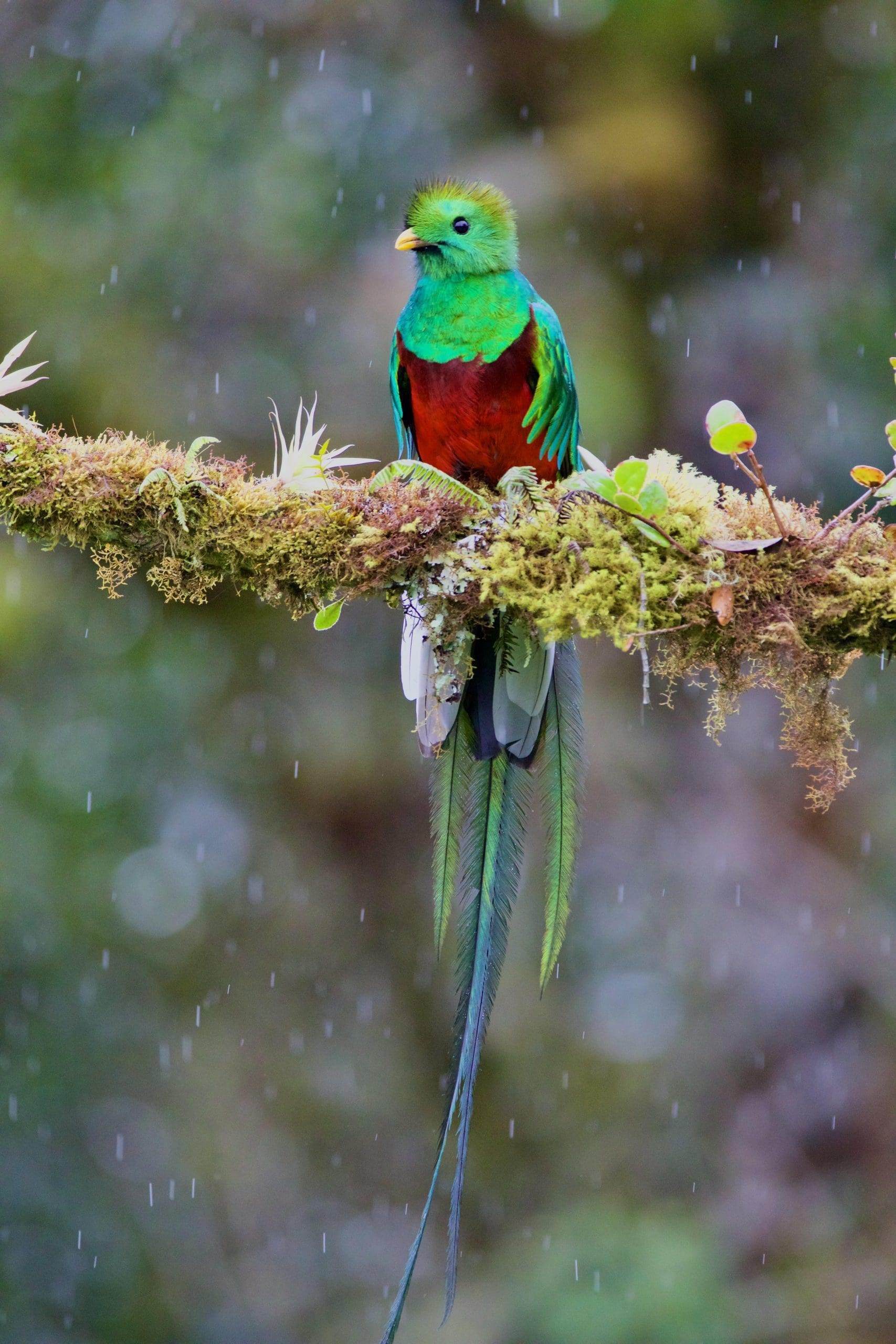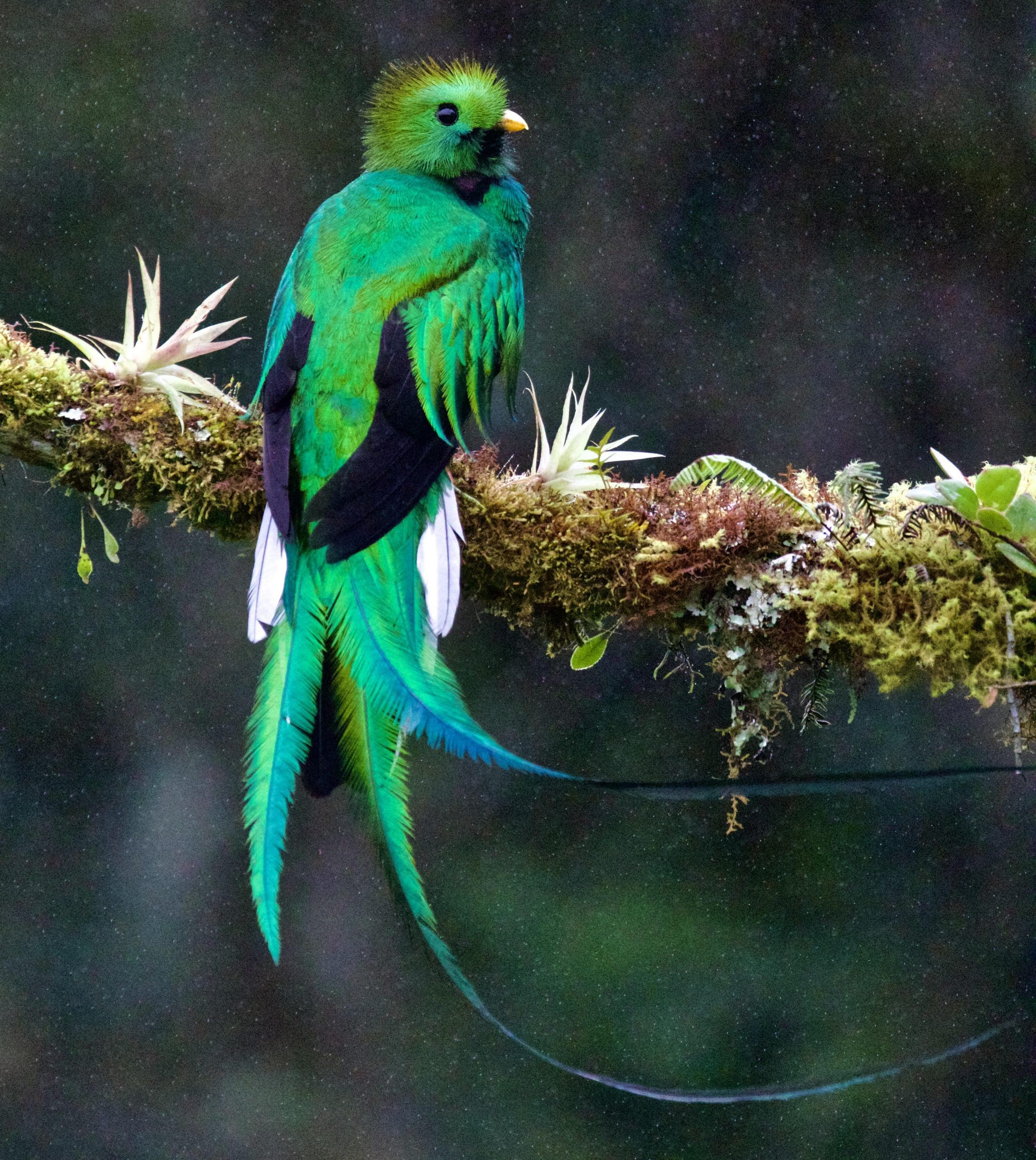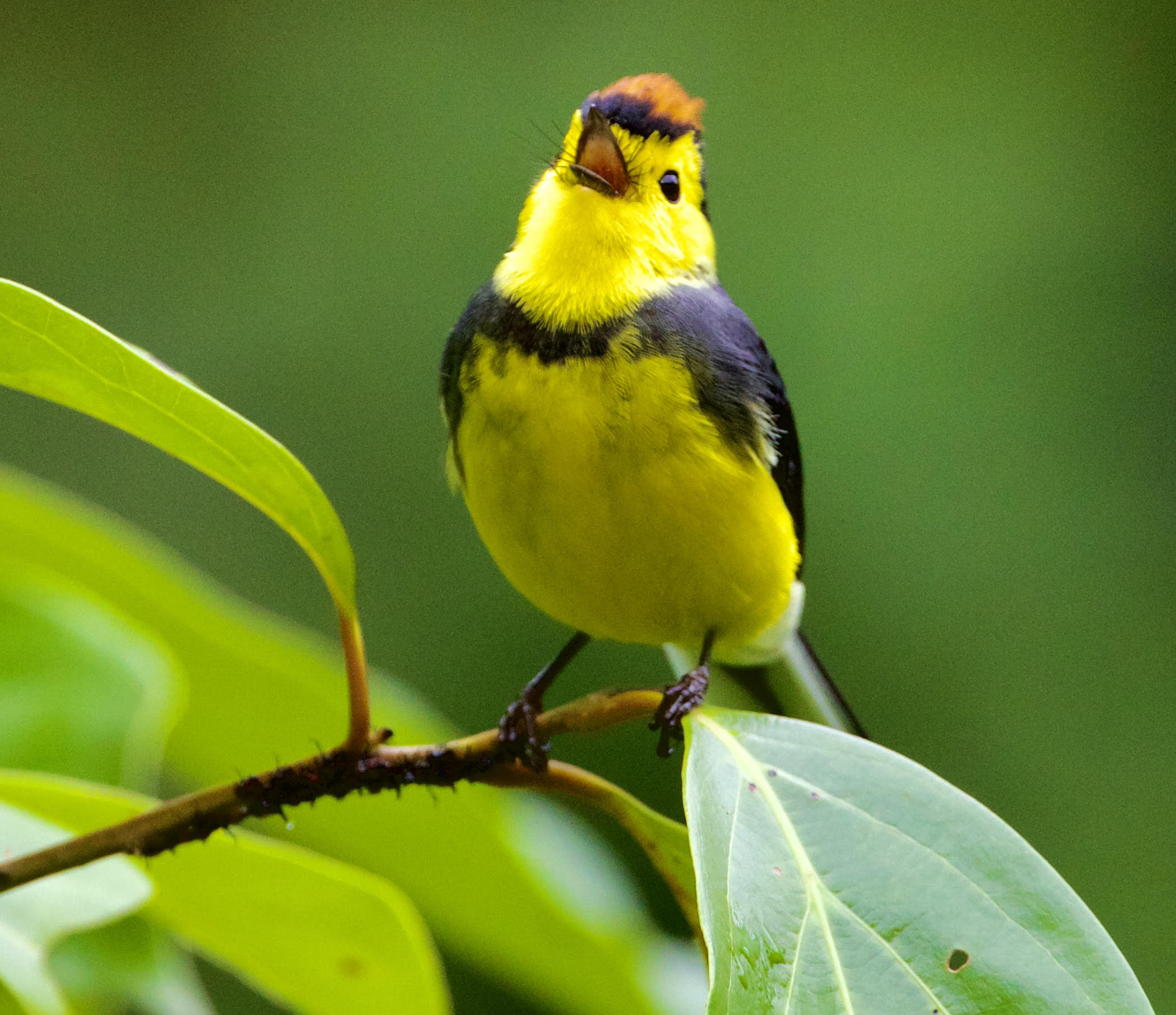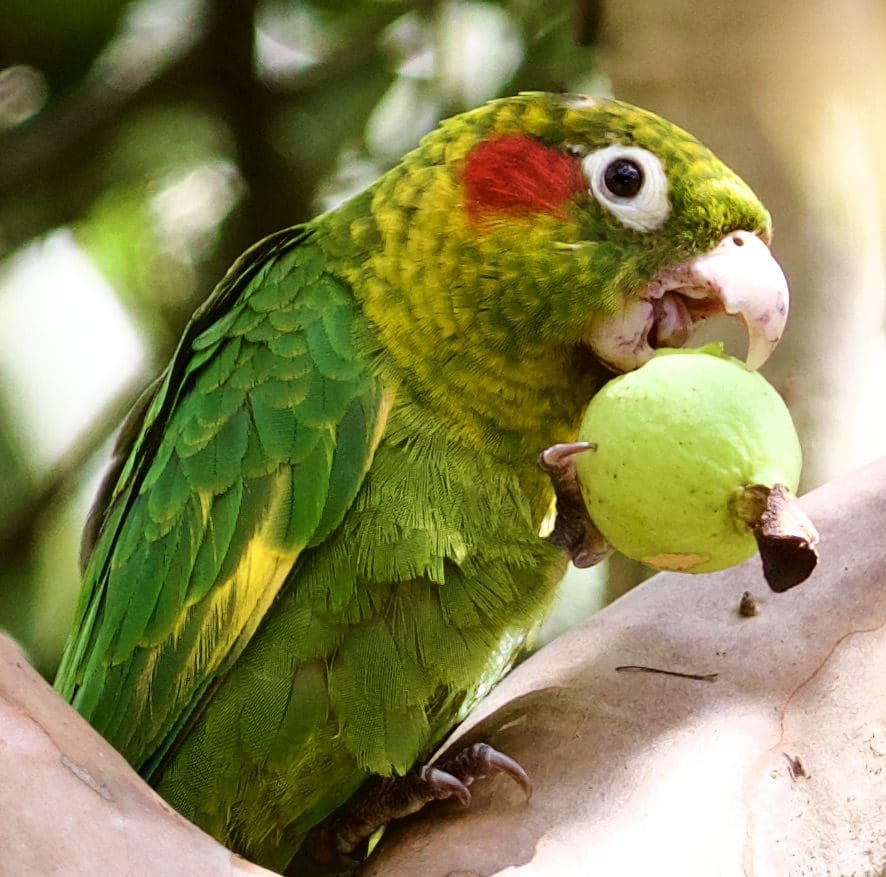
Fred’s Bird Adventures
The Sulphur-Winged Parakeet
Bird in Brief
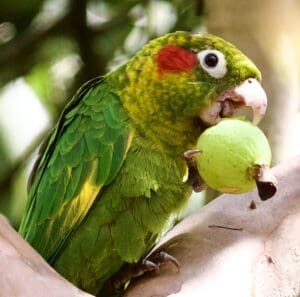 The Sulphur-Winged Parakeet
The Sulphur-Winged Parakeet
(Pyrrhura hoffmanni)
- Also known as Hoffman’s conure or the sulfur-winged parakeet
- Endemic to the highlands of southern Costa Rica and western Panama, preferring a habitat of mountain forests and open woodland up to 3,000 meters but sometimes descending to 1,300 meters in the wet season
- Medium-sized parrots, mainly green, orange-scaled on the head and chest, with a red nape spot and dull red tail
- Recognized in flight by the extensive yellow on the inner wing
- Feed in flocks of 5-15 birds at treetop level, taking various seeds and fruits including figs
- In breeding seasons, hens lay on average three white eggs in an unlined nest cavity 8-20 meters high in a tree — possibly an old woodpecker hole or a broken stub
- Both male and female incubate the eggs for about 23 days
Source: Beauty of Birds
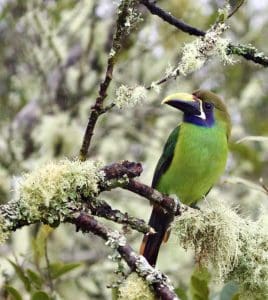 The Emerald Toucanet
The Emerald Toucanet
(Aulacorhynchus prasinus)
- Male and female differ in size but alike in color: dominantly green with highlights of whites, grays and reddish browns, blending in with the colors of their tree dwellings
- Mating season typically March through July
- Nest in abandoned tree cavities previously made by smaller species, laying three to four eggs
- Incubation period about 16 days, with chicks taking flight as early as 40 days and not returning to the nest at all at about 43 days
- Omnivorous, eating lizards and eggs or nestlings of other birds when possible, though insects and fruits are the largest part of their diet
- Found from southern Mexico through Central America to Venezuela and Peru,principally in mixed mountain forest from sea level to 2,600 meters, but more common above 900 meters, preferring dense forest and highest tree branches
Source: MacawMountain.com
Bird in Brief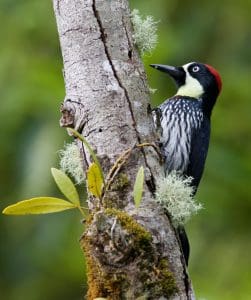
Acorn Woodpecker
(Melanerpes formicivorus)
- Found from northwestern Oregon, California, American southwest and western Mexico, through the Central American highlands into northern Colombia Andes
- Prefers pine-oak woodlands where oak trees are plentiful, but also found in tropical hardwood forests with nearby oak trees
- Medium-sized, black and white clown-faced bird with a red crown, glossy black and white head, white eyes, white rump and wing patches, and usually at least one red or yellow-tipped feather on the throat
- Highly social and usually live year-round in social units, with tropical populations often moving together
- Monogamous mating in some populations and cooperative polygyny in others
- Nest cavities drilled into large dead or living tree limbs may contain granaries, and are lined with fresh wood chips; may be reused for several seasons
Source: animaldiversity.com
The Long-tailed Silky Flycatcher
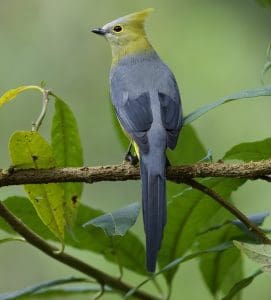
(Ptilogonys caudatus)
- Related to waxwings, and have in common a soft, silky plumage
- Found only in the mountains of Costa Rica and western Panama, usually from 1,850 meters altitude to the timberline
- Often perch prominently on high exposed twigs
- Male is thrush-sized, with pale gray forehead; yellow crested head, neck, throat and yellow belly; blue-gray back, lower breast and upper belly and black flight and tail feathers
- Female is generally duller in color, with a darker gray forehead, olive body plumage and a shorter, duller black tail
- Forages in small flocks when not breeding, flycatching for small insects or taking small fruits, — especially mistletoe — berries and vegetables
The only known bird species with a specialized gizzard mechanism that removes berry skins and separates for more efficient digestion - Breeding pairs in mountain forest habitat build lichen cup nest high in a tree, sometimes in loose colonies, for spring nesting
- Both male and female participate in the 15-day incubation of two brown and lilac-blotched gray eggs
- The young fledge 18 to 25 days after hatching, and are fed by both parents
- Known for imitating the calls of 12 other bird species
Source: Beauty of Birds
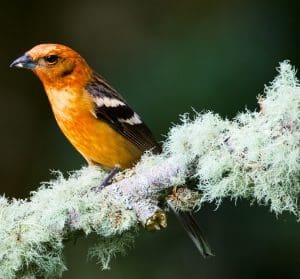 The Flame-Colored Tanager
The Flame-Colored Tanager
(Piranga bidentata)
I photographed this flame-colored tanager in December 2022, high up in the mountains south of Cartago, Costa Rica.
Males are brightly colored with orange-red coloring and darker wings and tails
Females are more yellow-orange
Length: 7 to 7.5 inches (18 to 19 cm.)
Typically inhabit woodlands in Mexico and Central America
Rarely seen in the U.S., but has started breeding in Arizona and also spotted in Texas
Nests made from twigs and grasses placed anywhere from higher tree branches to lower shrubs in fairly open areas
Forage for insects in the treetops and berries near the ground
Lines of army ants carrying wasp larvae to provide “2-for-1” bonus meal
Source: birdadvisors.com
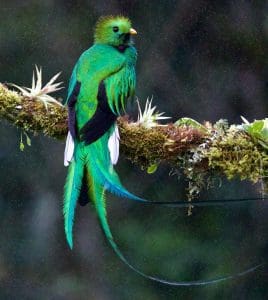 Quetzal
Quetzal
The prime time for resplendent quetzal watching in Costa Rica is from mid-February to July, their mating season. During this time, the avocado trees bear the resplendent quetzal’s favorite fruit. And don’t forget to pack your winter clothes. Even though it is still the tropics, high elevation and moisture can bring temperatures down to the low 40s Fahrenheit.
Learn more about this spectacular bird in these Howler articles:
This collared redstart was photographed high up in the mountains south of Cartago, Costa Rica, at about 6,000 ft. elevation. I call the little fellow ”Sing Like Nobody’s Watching.”
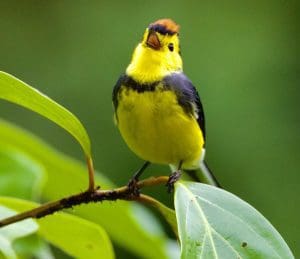
The Collared Redstart (Myioborus torquatus)
- Also known as the collared whitestart
- Endemic to the mountains of northern Costa Rica and western-central Panama
- Common at heights between 5,000 ft. (1,500 m.) and the timberline
- Typically found in mossy mountain forests, ravines, second growth and adjacent pastures
- Usually observed in pairs among other bird species
- Averages length is 5 inches (12.5 cm)
- Males and females look alike; juveniles are a duller color
Source: Beautyofbirds.com
Costa Rica’s wildlife diversity is one of the many reasons why people “flock” to this Central America country.
Fred Lipsky shares a variety of bird photography during a recent trip.
- from 6,000 to 8,000′ elevations
- in the mountains south of Cartago
- on a rainy adventure

